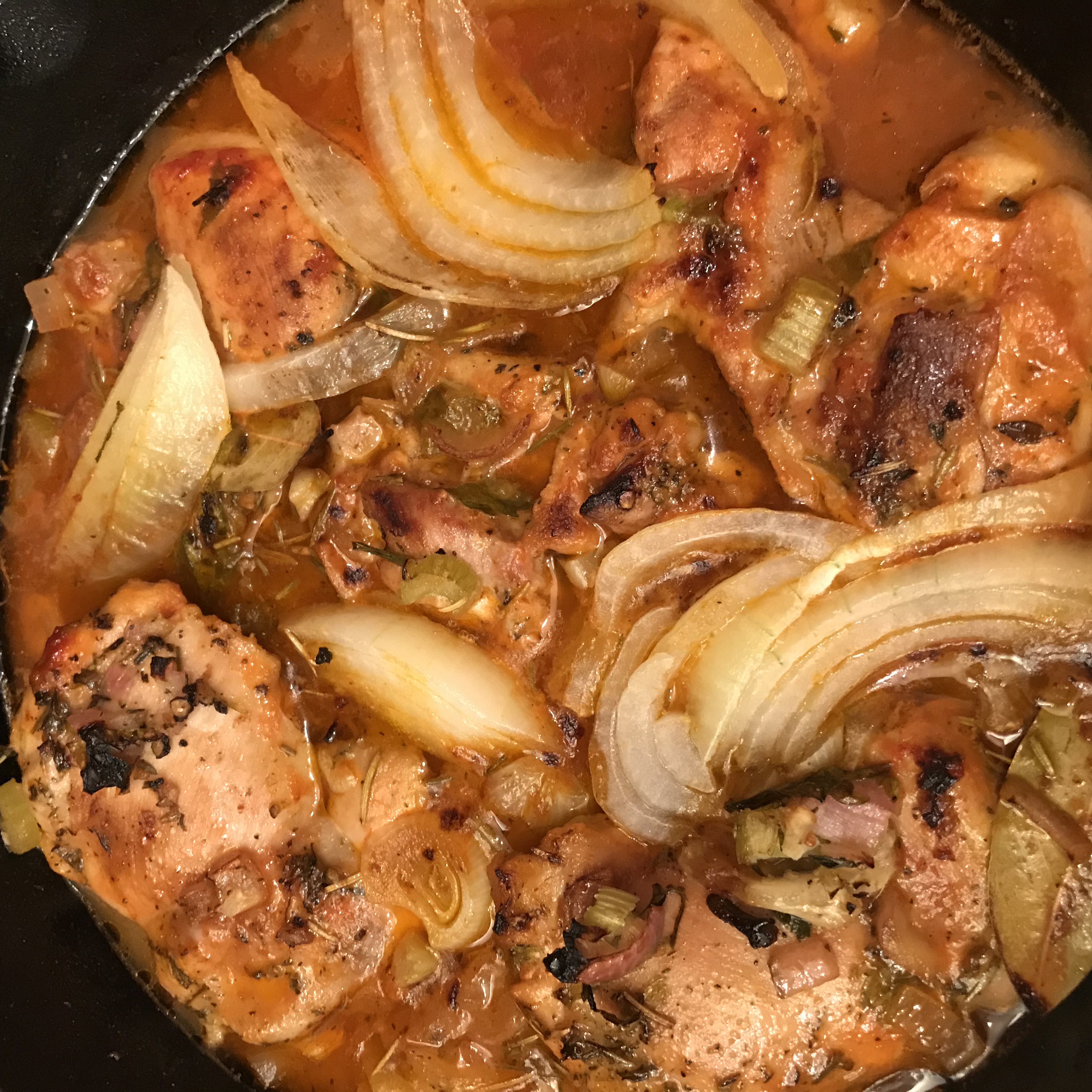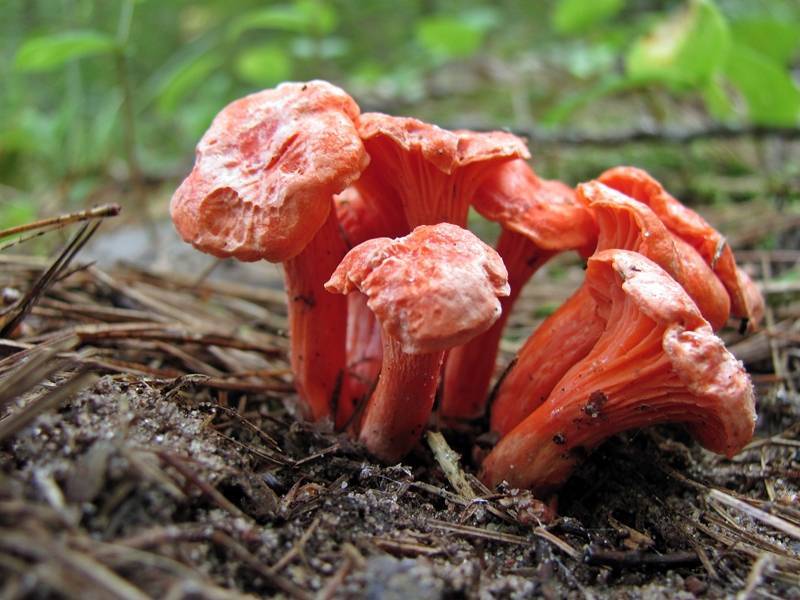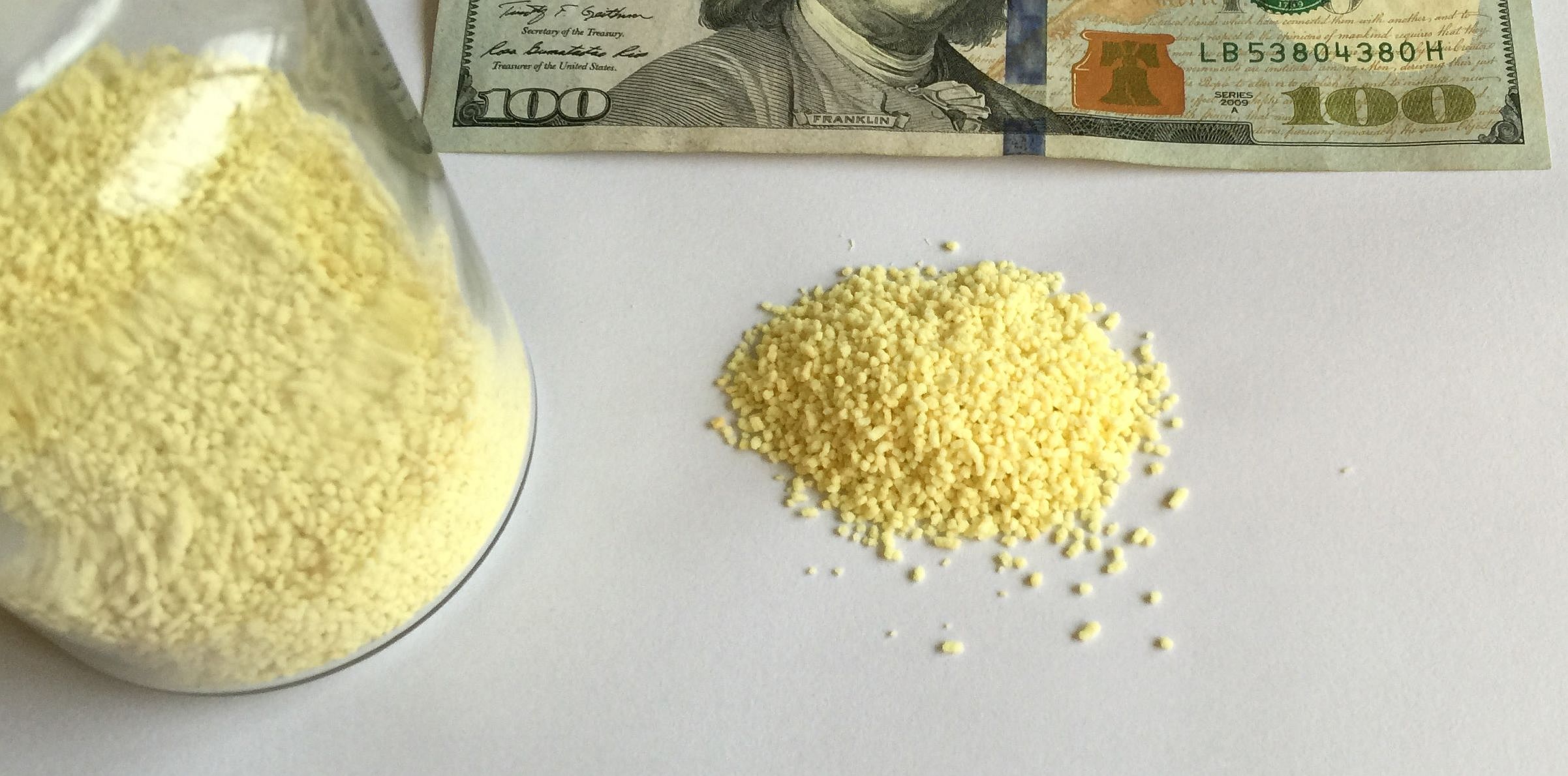|
Djondjon
Djondjon (also spelled djon djon or djon-djon) is the common name for a type of edible black mushroom often found in northern Haiti and used as a delicacy in some Haitian dishes, such as diri djondjon. The name djondjon does not refer to a single species of mushroom, but is rather a colloquial name for a group of several edible, taxonomically distinct species. However, some researchers suggest that the most common species is ''Psathyrella'' '' cf.'' ''hymenocephala''. Species from '' Cantharellus'' and '' Inocybe'' have also been identified in dried mixtures sold in Haitian markets. The mushrooms can be found on the marketplace in some western stores, though reportedly they are sold at high prices — Gene Yetter of the New Jersey Mycological Association and New York Mycological Society reported that he found them being sold dried in New York for around $1 USD for a quarter of an ounce. Use in cooking When cooked, djondjon mushrooms give the dish that they are in an "exquisite col ... [...More Info...] [...Related Items...] OR: [Wikipedia] [Google] [Baidu] |
Diri Djondjon
Diri djondjon (''Black mushroom rice'') is a native dish of Haiti. It is essentially a meal consisting of rice made with edible black mushrooms called djondjon Djondjon (also spelled djon djon or djon-djon) is the common name for a type of edible black mushroom often found in northern Haiti and used as a delicacy in some Haitian dishes, such as diri djondjon. The name djondjon does not refer to a single .... The meal is more common in the northern region of the country and therefore can be considered a regional specialty. When the mushrooms are boiled, they release a grayish-black coloring giving the rice its gray color and the dish's distinctive flavor. The dish is often served with some sort of meat, whether it be fish, chicken, or shrimp (usually mixed in the rice). See also * List of mushroom dishes References Haitian cuisine Rice dishes Mushroom dishes {{Haiti-cuisine-stub ... [...More Info...] [...Related Items...] OR: [Wikipedia] [Google] [Baidu] |
Haitian Cuisine
Haitian cuisine consists of cooking traditions and practices from Haiti. It is a Creole cuisine that originates from a blend of several culinary styles that populated the western portion of the island of Hispaniola, namely the African, French, indigenous Taíno, Spanish and Arab influence. Haitian cuisine is comparable to that of "criollo" (Spanish for 'creole') cooking and similar to the rest of the Latin Caribbean, but differs in several ways from its regional counterparts. The flavors are of a bold and spicy nature that demonstrate African and French influences, with notable derivatives coming from native Taíno and Spanish techniques. Levantine influences have made their way into the mainstream culture, due to an Arab migration over the years. Years of adaptation have led to these cuisines to merge into Haitian cuisine. History Pre-colonial cuisine Haiti was one of many Caribbean islands inhabited by the Taíno natives, speakers of an Arawakan language called Taíno. The ... [...More Info...] [...Related Items...] OR: [Wikipedia] [Google] [Baidu] |
Edible Mushroom
Edible mushrooms are the fleshy and edible fruit bodies of several species of macrofungi (fungi which bear fruiting structures that are large enough to be seen with the naked eye). They can appear either below ground (hypogeous) or above ground (epigeous) where they may be picked by hand. Edibility may be defined by criteria that include absence of poisonous effects on humans and desirable taste and aroma. Edible mushrooms are consumed for their nutritional and culinary value. Mushrooms, especially dried shiitake, are sources of umami flavor. Edible mushrooms include many fungal species that are either harvested wild or cultivated. Easily cultivated and common wild mushrooms are often available in markets, and those that are more difficult to obtain (such as the prized truffle, matsutake, and morel) may be collected on a smaller scale by private gatherers. Some preparations may render certain poisonous mushrooms fit for consumption. Before assuming that any wild mushroom is ... [...More Info...] [...Related Items...] OR: [Wikipedia] [Google] [Baidu] |
Haiti
Haiti (; ht, Ayiti ; French: ), officially the Republic of Haiti (); ) and formerly known as Hayti, is a country located on the island of Hispaniola in the Greater Antilles archipelago of the Caribbean Sea, east of Cuba and Jamaica, and south of The Bahamas and the Turks and Caicos Islands. It occupies the western three-eighths of the island which it shares with the Dominican Republic. To its south-west lies the small Navassa Island, which is claimed by Haiti but is disputed as a United States territory under federal administration."Haiti" ''Encyclopædia Britannica''. Haiti is in size, the third largest country in the Caribbean by area, and has an estimated population of 11.4 million, making it the most populous country in the Caribb ... [...More Info...] [...Related Items...] OR: [Wikipedia] [Google] [Baidu] |
Taxonomically
In biology, taxonomy () is the scientific study of naming, defining ( circumscribing) and classifying groups of biological organisms based on shared characteristics. Organisms are grouped into taxa (singular: taxon) and these groups are given a taxonomic rank; groups of a given rank can be aggregated to form a more inclusive group of higher rank, thus creating a taxonomic hierarchy. The principal ranks in modern use are domain, kingdom, phylum (''division'' is sometimes used in botany in place of ''phylum''), class, order, family, genus, and species. The Swedish botanist Carl Linnaeus is regarded as the founder of the current system of taxonomy, as he developed a ranked system known as Linnaean taxonomy for categorizing organisms and binomial nomenclature for naming organisms. With advances in the theory, data and analytical technology of biological systematics, the Linnaean system has transformed into a system of modern biological classification intended to reflect the evo ... [...More Info...] [...Related Items...] OR: [Wikipedia] [Google] [Baidu] |
Psathyrella
''Psathyrella'' is a large genus of about 400 species, and is similar to the genera '' Coprinellus'', ''Coprinopsis'', ''Coprinus'' and ''Panaeolus'', usually with a thin cap and white or yellowish white hollow stem. The caps do not self digest as do those of ''Coprinellus'' and ''Coprinopsis''. Some also have brown spores rather than black. These fungi are often drab-colored, difficult to identify, and all members are considered inedible or worthless (for eating) and so they are often overlooked. However they are quite common and can occur at times when there are few other mushrooms to be seen. The first report of a gilled mushroom fruiting underwater is ''Psathyrella aquatica''. The genus name ''Psathyrella'' is a diminutive form of ''Psathyra'', derived from the Greek word ψαθυρος, ''psathuros'' 'friable'. The type species of ''Psathyrella'' is ''Psathyrella gracilis'', which is now known as ''Psathyrella corrugis''. Characteristics In order to identify the species ... [...More Info...] [...Related Items...] OR: [Wikipedia] [Google] [Baidu] |
Cantharellus
''Cantharellus'' is a genus of popular edible mushrooms, commonly known as chanterelles, a name which can also refer to the type species, ''Cantharellus cibarius''. They are mycorrhizal fungi, meaning they form symbiotic associations with plants, making them very difficult to cultivate. Caution must be used when identifying chanterelles for consumption due to lookalikes, such as the jack-o'-lantern mushroom (''Omphalotus olearius'' and others), which can make a person very ill. Despite this, chanterelles are one of the most recognized and harvested groups of edible mushrooms. Many species of chanterelles contain antioxidant carotenoids, such as beta-carotene in ''C. cibarius'' and ''C. minor'', and canthaxanthin in ''C. cinnabarinus'' and ''C. friesii''. They also contain significant amounts of vitamin D. The name comes from Greek κάνθαρος, ''kantharos'' 'tankard, cup'. [...More Info...] [...Related Items...] OR: [Wikipedia] [Google] [Baidu] |
Inocybe
''Inocybe'' is a large genus of mushroom-forming fungi with over 1400 species, including all forms and variations. Members of ''Inocybe'' are mycorrhizal, and some evidence shows that the high degree of speciation in the genus is due to adaptation to different trees and perhaps even local environments. Etymology The name ''Inocybe'' means "fibrous hat". It is taken from the Greek words (in the genitive , meaning "muscle, nerve, fiber, strength, vigor") and ("head"). History The genus was first described as ''Agaricus'' trib. ''Inocybe'' by Swedish scholar Elias Magnus Fries in volume 1 of his work, ''Systema Mycologicum, Systema mycologicum'' (1821), and verified in the volume 2 of his book ''Monographia Hymenomycetum Sueciae'' in 1863. All other renaming attempts are accepted synonymous Description Typical mushrooms of the genus have various shades of brown, although some lilac or purplish species exist. pileus (mycology), Caps are small and conical, though flattening some ... [...More Info...] [...Related Items...] OR: [Wikipedia] [Google] [Baidu] |
New York Mycological Society
The New York Mycological Society is a nonprofit organization of people who share an interest in mycology as well as in mycophagy. The present NYMS was reincarnated in 1962 by the composer John Cage and a small group of other mushroom lovers and students, including illustrator Lois Long and noted mycologist Guy Nearing. The NYMS runs events and mushrooming walks throughout the greater NYC area. The society started from a class at The New School The New School is a private research university in New York City. It was founded in 1919 as The New School for Social Research with an original mission dedicated to academic freedom and intellectual inquiry and a home for progressive thinkers. ... in 1959. References External links New York Mycological Society Mycology organizations Science and technology in New York City {{mycology-org-stub ... [...More Info...] [...Related Items...] OR: [Wikipedia] [Google] [Baidu] |
New York City
New York, often called New York City or NYC, is the List of United States cities by population, most populous city in the United States. With a 2020 population of 8,804,190 distributed over , New York City is also the List of United States cities by population density, most densely populated major city in the United States, and is more than twice as populous as second-place Los Angeles. New York City lies at the southern tip of New York (state), New York State, and constitutes the geographical and demographic center of both the Northeast megalopolis and the New York metropolitan area, the largest metropolitan area in the world by urban area, urban landmass. With over 20.1 million people in its metropolitan statistical area and 23.5 million in its combined statistical area as of 2020, New York is one of the world's most populous Megacity, megacities, and over 58 million people live within of the city. New York City is a global city, global Culture of New ... [...More Info...] [...Related Items...] OR: [Wikipedia] [Google] [Baidu] |
Bouillon Cube
A bouillon cube (Canada and US), stock cube ( Australia, Ireland, New Zealand, South Africa and UK), or broth cube (Asia) is dehydrated broth or stock formed into a small cube about wide. It is typically made from dehydrated vegetables or meat stock, a small portion of fat, MSG, salt, and seasonings, shaped into a small cube. Vegetarian and vegan types are also made. Bouillon is also available in granular, powdered, liquid, and paste forms. History Dehydrated meat stock, in the form of tablets, was known in the 17th century to English food writer Anne Blencowe, who died in 1718,Joan Thirsk, ‘Blencowe , Anne, Lady Blencowe (1656–1718)’, Oxford Dictionary of National Biography, Oxford University Press, Oct 2005; online edn, Jan 200accessed 17 Nov 2016/ref> and elsewhere as early as 1735. Various French cooks in the early 19th century (Lefesse, Massué, and Martin) tried to patent bouillon cubes and tablets, but were turned down for lack of originality.Jennifer Davis, ... [...More Info...] [...Related Items...] OR: [Wikipedia] [Google] [Baidu] |
Maggi
Maggi ( or ) is an international brand of seasonings, instant soups, and noodles that originated in Switzerland in the late 19th century. The Maggi company was acquired by Nestlé in 1947. History Early history Julius Maggi (1846–1912) took over his father's mill business in Kemptthal, Switzerland, in 1869. Under his leadership, the business developed into one of the pioneers of industrial food production with the aim of improving the diet of working-class families through better nutrient supply and faster preparation. In 1882, at a meeting of the Swiss “Non-Profit Society”, the doctor and factory inspector Fridolin Schuler spoke about the miserable nutritional situation of the factory workers: women workers no longer had enough time to cook for their families, cold meals or alcohol often replaced warm meals; meals were served in factory canteens and were cheap but not sufficiently nutritious. The consequences were malnutrition, stomach diseases and high infant mor ... [...More Info...] [...Related Items...] OR: [Wikipedia] [Google] [Baidu] |






